- Home
- Michael Byrnes
The Sacred Bones Page 16
The Sacred Bones Read online
Page 16
"Extraordinary." Bersei eyed the on-screen image-- an assembled version of what lay on the workstation behind them. For a moment, he was again awestruck by the amazing capabilities of computer technology. "That's probably just the way our man looked prior to interment into the ossuary."
"What about the flesh?"
He held his hands out as if trying to slow a speeding car. "One step at a time."
"Sorry. Too much coffee."
"We like to take things a bit slower over here," he joked. "Helps longevity."
Charlotte cringed.
Bersei worked the mouse again. "Next we'll ask the computer to assign muscle mass to the skeletal frame. The software will measure every bone to estimate its density and re-create its ligament attachment points."
She knew the basic concept. "Larger muscles place more stress on the bones they're attached to, requiring stronger ligaments and connecting points?"
"Quite so. Call it reverse engineering. Granted, the program can't account for every soft tissue abnormality. But it can detect a skeleton's structural anomalies. If that happens, the program will attempt to re-create it, or we'll get an error message. That said, let's get some muscle on this frame." He refocused on the screen.
The progress window reappeared:
PLEASE WAIT WHILE YOUR SAMPLE IS PROCESSED.
77% complete...
100% complete.
The screen refreshed.
This time the program had clothed a fibrous weave of lean musculature over the skeletal form. The image was gruesome but anatomically correct-- a de-skinned human, the muscles various shades of red, the ligaments a disturbing bluish-white. The man had been extremely well formed and perfectly proportioned.
Charlotte leaned in closer. "Looks very fit," she said matter-of-factly.
"No McDonald's back then," he said as he manipulated the mouse.
"Or osso bucco for that matter."
They both laughed.
Settling down, Giovanni looked back at the screen. "Okay, let's add some skin here." He clicked a command.
Almost instantly the screen refreshed again, the 3-D image looking like a Bernini marble sculpture with its smooth "flesh." The enhanced image omitted all hair, including eyebrows. The eyes were smooth, colorless orbs.
Charlotte was transfixed. Now the study had entered a new realm where an otherwise unnamed, faceless specimen seemed to take on an eerie, lifelike quality. They were bringing these ancient bones back from the dead.
"This is where your DNA analysis will help fill in the blanks," Bersei continued. "The program accepts genetic information-- it re-creates everything from eye and skin color to hair density, hairline, fingernails, body hair, and so on. We can also approximate body fat content within an accurate range. Thus far, I think his most impressive feature is this." He pointed to the lower right corner of the screen where basic statistics were reported, including one line reading:
HEIGHT (in./cm.): 73.850 / 187.579.
"Extremely tall for his day," Bersei observed. "Odd. If this man died in the beginning of the first century, he would have really stood out."
"People were shorter back then, right?"
"It's a commonly held belief that their nutrition wasn't adequate. But I wouldn't give that much credit. Many would argue it was actually better. But even by modern standards this man would turn heads. Your genetic data may help shed light on this."
"Go in on the face."
He held the mouse button to drag a white-lined frame around the image and clicked to zoom.
A ghostly form filled the screen, its features well defined, yet soft, with a long sloping nose, full lips, and a strong chin. There was a pronounced jaw line with a firm brow and wide eyes.
Bersei seemed satisfied. "For now this is the program's best re-creation. He was a handsome devil."
Charlotte was mesmerized by the haunting features. "I wonder how accurate this is."
"I've used this same program to reconstruct identities on similar skeletons for homicide investigations," Bersei said in a confident tone, "and it's always proved very accurate when eventually matched with a victim's known profile."
The intercom suddenly came to life. Father Donovan apologized for the interruption, but was patching through a call from a Signore Ciardini.
"Probably our carbon dating results," Bersei said. "Why don't you take that call and I'll continue my work on the ossuary."
"Sounds good," she said as she made her way over to the phone.
Bersei returned to his workstation.
Once he had finished removing the powdery dust layer from the bottom of the ossuary, something there caught his eye.
A thin outline.
Grabbing a small brush, he bent closer, dusting the grooves until a rectangular form gradually emerged.
Trading the brush for a small blade, he inserted it along the rectangle's edge, carefully jimmying under what looked like a metal plate. With the plate removed, a hollowed-out compartment was revealed. Inside were the shadowy forms of three long, tapered objects.
He thought his eyes were playing tricks, and adjusted the overhead lighting. Reaching into the ossuary, he worked his fingers along the compartment. Giovanni sensed metal through the latex as he withdrew one of the objects. It was surprisingly heavy, easily eighteen centimeters long and black as coal with a knobby, blunted end that tapered into a shaft of wrought edges.
A nail.
Placing it on a tray, he stared at it, disbelief flooding back.
He pulled two remaining nails from the bottom of the ossuary, and aligned all three on the tray. Three more items that would substantiate the skeleton's identity. There had been many moments in Bersei's career that served as reminders of his passion for discovery. But these revelations transcended all rationality. "Oh my," he gasped, sinking back into his chair.
Across the lab Charlotte had just hung up the phone.
"You've got to see what I've just found," he called over to her. His eyes were locked on the tray.
Charlotte approached the workstation. By Bersei's blanched look she knew that the ossuary had offered up yet another of its secrets.
He pointed mutely to the tray.
She saw three metal objects lying on the tray's shiny steel surface. "Railroad spikes?" Staring down at the jagged points of the nails made the whole ghastly process of crucifixion even more real.
Bersei broke the silence. "I think it's safe to say that these would have been the nails used to crucify this man...whoever he was."
"Where did you find them?"
"Take a look." He pointed with his chin.
She positioned herself above the ossuary, scanning its exposed cavity-- a hollowed-out limestone shell.
"The dust was concealing it."
That's when her eyes caught the faint outline of something else hidden deep inside the ossuary. It looked like a second recess carved even deeper into the compartment. "Wait," she called sharply, swinging the retractable lighting arm over the ossuary, light flooding its interior. "Looks like you missed something. There. It looks like..." Under the harsh glare she could discern it better. "...a cylinder?"
33.
JERUSALEM
Razak found Farouq in the small upstairs room in the Grammar College building the Waqf had converted into its temporary office. He'd just finished a phone call.
Before he could open his mouth, the Keeper cut across: "Topol says no recorded shipments over the past couple of days come close to matching the ossuary." He drummed his fingers on the desk. "This isn't going well."
Razak took a seat. Farouq looked as if he hadn't slept in days as he turned to face him at an angle that perfectly superimposed the Keeper over the window-framed backdrop of the Dome of the Rock Mosque.
"Hamas and the Palestinian Authority," Farouq continued, "both confirmed that the helicopter used to transport the thieves from the Haram esh-Sharif was definitely Israeli. When I confronted Teleksen about it, he claimed it had been hijacked from the Sde Dov
air base near Tel Aviv. A Sikorsky UH-60 Black Hawk."
If Razak's memory served him correctly, Israel had purchased several of the assault helicopters from the Americans in the late 1990s.
"Seems that the Israeli Air Force shares the Sde Dov airfield with commercial carriers," Farouq added.
"No wonder it was so easy for someone to sneak onto the base."
"Let's not jump to conclusions." His tone was razor sharp. "There's always the possibility that the helicopter wasn't actually stolen."
Not liking the fact that Farouq's objectivity seemed to be waning, Razak shifted gears. "At least they've finally admitted to it. Quite an embarrassment for them."
"Assuming it was an accident, of course."
"Did you ask Teleksen why we weren't informed sooner?"
"Of course I did."
"And what was his response?"
Farouq folded his arms. "He was concerned the information would be leaked to the media."
Razak had to admit that if the tables had been turned, the Palestinians would also have done their best to conceal any information that could initiate hostile retaliation. It all just seemed like a never-ending game. "You don't actually think the Israelis arranged for the theft, do you?"
"It's too soon to tell. But obviously I'm suspicious."
"But what about all those Israeli soldiers murdered?" He shook his head. It just didn't gel with what Barton was presenting. Why would the Jews be interested in the supposed relics of a false messiah or some ridiculous legend about the Holy Grail? "What could their motive possibly be?"
"What has the Israeli motive ever been? These people are always looking to destroy peace."
The same response Razak would expect from Hamas. "So how will you proceed?"
"I'm not sure. For now, we'll await more information." Farouq laced his fingers together and pressed them against his lips. "Tell me, what is going on with the English archaeologist...this Barton character?"
Surely this was not the time to fuel the old man's growing frustrations with the other side. As it stood, the archaeologist's wild theories remained just that-- untamed. "He's asked to see the chamber again. He feels he may have missed something."
Trying to hide his concern, the Keeper seemed unfazed. "Like what?"
"I'll tell you as soon as I find out." Razak stood to leave. "By the way, I'll need to borrow your car. I'm meeting someone who may be able to give us some good information."
"Fine." Farouq opened his desk drawer and gave Razak a key to the Mercedes S500. "I just had it cleaned. Where will you be going?"
"Gaza City," Razak coolly replied.
"I see." Farouq's face went limp as he considered asking for the key back. "You know how things are over there right now."
"I'll be careful," Razak assured him. "I'm taking Barton with me. It will be fine."
Clearly unconvinced, Farouq nodded. "Just remember that we're trying to solve a crime here, Razak. An act of terrorism. We're not making a documentary. Make sure Barton stays on track."
"Yes, yes."
After Razak left, Farouq sat in silence for some time, staring emptily out the window at the gold-leafed cupola of the Dome of the Rock-- the structure that single-handedly defined Islam's claim to Palestine.
Even the name of the site was one neither side could agree on. To Jews, it was the Temple Mount. To Muslims-- the Haram esh-Sharif.
Everything in Jerusalem had at least two names, even the city itself-- Al Quds.
How could such a small country have redefined the Middle East and sparked the counter crusade-- jihad? Centuries of conflict. So many disputes. To Farouq, religion was no longer the cause he championed. It was far more than that now.
He thought back to his days on the front line. He'd been a soldier during the Six Days' War in 1967, when the Arab nations-- Egypt, Syria, and Jordan-- had formed a united front to cast the Israelis into the sea, once and for all. But Israel's lethal air force-- purchased from the United States-- had been underestimated, preemptively striking the Egyptian airfields before the offensive even began. The conflict had ended with terrible consequences for the Palestinians. Israel had managed to wrest control over the Golan Heights, the West Bank, and the Sinai Peninsula. But even after that disastrous conflict, the Temple Mount had remained under Islamic control. Even the heavily armed Israelis knew that an attack against this site would escalate conflict to entirely new levels.
In 1973 Farouq had once again fought for his people when Egypt and Syria joined forces to reclaim the occupied territories, launching a sneak attack in Sinai and the Golan Heights during the holiest of the Jewish holidays-- Yom Kippur, the Day of Atonement. For two weeks the Arab forces pushed deeper and deeper into the region, almost breaking the Israelis. But the tide soon turned, with the United Nations enforcing a ceasefire.
Farouq's hand migrated to his chest and massaged the scar beneath his tunic where an Israeli infantryman's bullet had almost taken his life.
Though a major conflict hadn't occurred in over three decades, Palestinian intifadas had been prolonged and frequent. Israel had strengthened its hold over the land, monopolizing the weaponry. It was a poorly kept secret that Israel had nuclear weapons, while Palestinians protesting on the streets had resorted to throwing stones.
But the emergence of extremist militant groups-- like Hamas and Islamic Jihad-- had transformed the conflict to a psychological offensive designed to starve the Israelis of peace and security. Highly visible suicide bombings had become the new voice of Palestinian freedom. Whether one called them terrorists or martyrs, the message was clear-- the Israelis were only visitors in this place.
There would never be peace in Israel and wise men like Farouq who had fought on the front line for independence knew why. To give up Palestine was to surrender to Western ideology. Just as Saladin had pushed the Crusaders out of the Holy Land in the twelfth century, the Palestinians would soon rise again to reclaim the region.
And no controversy resulted in more bloodshed than those resulting from Israeli meddling with the Temple Mount. The archaeological digs initiated by Israelis and Palestinians in 1996 had resulted in scores of deaths. In 2000 Ariel Sharon had tried to reassert Israeli control over the site by marching into the esplanade with hundreds of IDF soldiers. Once again the Palestinians interpreted these actions as a religious attack, and much bloodshed had ensued.
Though he no longer wielded a rifle, Farouq remained a soldier on this new battlefront. The Temple Mount-- the region's most valuable asset-- was an archaeological treasure, a time capsule of world faith and politics. And no matter how sophisticated Israeli weaponry became, they would never reclaim the site while he lived and breathed. With all Farouq had fought for in the past, he would rather die before that day passed.
Picking up the phone, he placed a call to the news department at Gaza City's Palestinian TV. Owned and operated by the Palestinian Authority, Palestinian TV underscored the extreme discontent at Israeli occupation. Its message had struck such a chord in right-wing Israeli circles that its director had been killed, shot at close range in the chest and head. The Mossad was suspected.
His call was routed to his inside contact-- a young, ambitious Muslim named Alfar. Farouq provided detailed information about the helicopter-- ammunition for what would prove to be the network's most contentious media bombshell ever.
Farouq hung up.
Emanating from the network of loudspeakers across the Haram esh-Sharif esplanade, he heard the call of the muezzin. It was time for midday prayer.
The Keeper eased himself onto his knees, faced south toward Mecca and began his recitation.
34.
VATICAN CITY
Standing to get a better look at what Charlotte had found, Bersei could see that nestled in a carved niche at the very bottom of the ossuary was something that resembled a metal test tube.
Above the white fabric of their masks, the two scientists exchanged looks.
"I've just about had all I can take right
now," Giovanni motioned to the cylinder. "You do the honors."
Charlotte reached down as if into a black hole. Her fingers closed around smooth metal. Slowly, and with infinite care, she withdrew it from the ossuary.
Turning her hand over, she rolled the tarnished tubular casing along her latex covered palm-- a stark contrast of old and new. Both ends were sealed by round metal caps. There were no distinguishing marks or inscriptions.
"A container of some kind?" She inspected each end in turn. Her eyes were on him, searching for an explanation, but Bersei could not speak. "Giovanni, I think you should open this."
He waved her away.
Charlotte rotated it. The metal looked similar to the coins. Was it bronze? "Okay. Here goes." She held the cylinder over an empty section of the tray. Clenching her teeth, she took hold of the cap sealing one end, applied equal pressure in the opposite direction and twisted. At first it didn't budge. But an instant later, a muffled cracking sound indicated the wax seal had broken.
The cap came free.
Fellow conspirators, the two scientists gazed at one another. Tilting the cylinder closer to the light, she glimpsed something rolled up inside.
"What do you see?" Bersei's voice was hoarse with tension.
"It looks like a scroll."
He balled his hand into a fist, pressing it against his chin. "Handle that extremely carefully." His voice was loud. "It's probably very brittle." First the coins, now this, he thought. It was getting to be overwhelming.
Gently tapping the unopened end of the cylinder, Charlotte coaxed the scroll from the tube. Sticking at first, it slid out suddenly, landing on the tray with a small thump. They both froze. "Shit! I didn't think that would happen so easily."
Bersei reached out and gingerly rolled it back and forth with his index finger, assessing the damage. "No harm done." He exhaled heavily. "Looks like it's in excellent condition."
"Is that parchment?"
Bersei studied it. "Most likely calfskin."
"Have you ever handled ancient documents?"

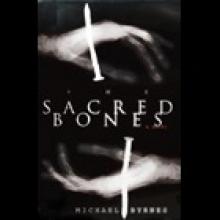 The Sacred Bones
The Sacred Bones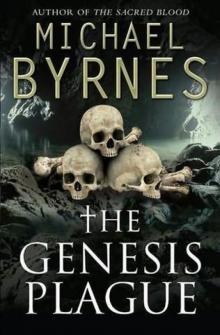 The Genesis Plague (2010)
The Genesis Plague (2010)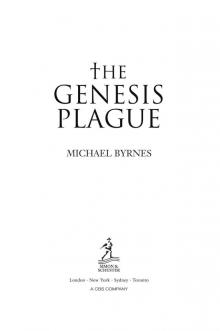 The Genesis Plague
The Genesis Plague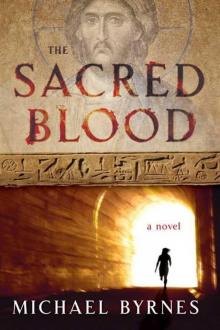 The Sacred Blood
The Sacred Blood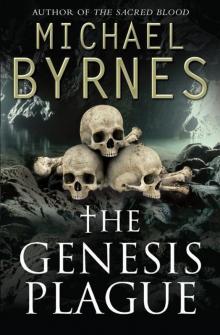 The Genesis Plague tf-1
The Genesis Plague tf-1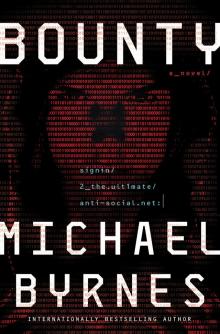 Bounty
Bounty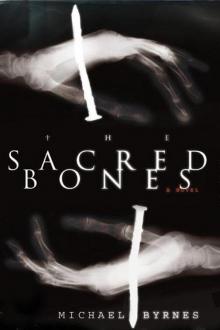 Sacred Bones : A Novel
Sacred Bones : A Novel